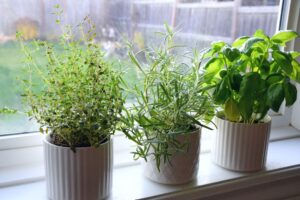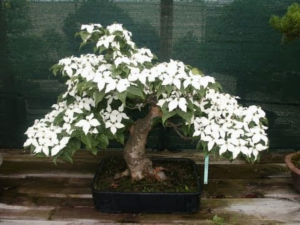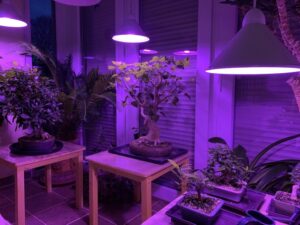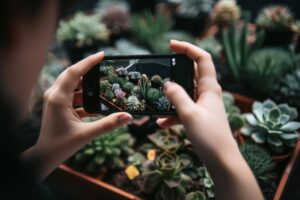What does a Fukien tea tree look like?
Most people don’t know about this little tree unless they’re into bonsai.
The Fukien tea tree, a popular bonsai tree, also known as Carmona retusa or Ehretia microphylla, is a tropical evergreen shrub. Even though pruning the Fukien tea tree can be challenging, it makes a fun houseplant.
The tree is native to parts of Japan, Indonesia, Taiwan, and Australia, but it has been named from its place of origin, Fukien or Fujian, China.
In China, the bonsai tree is very popular in Penjing, and in western countries, it is widely grown as an indoor plant.
Read on to learn more about Fukien tea (Carmona) tree bonsai, including how to care for them. In addition, I will tell you how to save your Carmona bonsai tree from dying.
Bonsai plants for office: Bonsai plants are a great way to add some greenery to your office space. Some bonsai plants that are well-suited for office environments include ficus trees, jade plants, and peace lilies. These plants are easy to care for and can thrive in low-light conditions.
Growing a Carmona Bonsai (Fukien Tea Bonsai)

The Carmona Bonsai tree is popular because it easily develops a thick and knotted trunk that is evergreen and frequently produces tiny lobed leaves. At the beginning of the growing stage, the trunk is thinner and has a light brown bark.
As the Carmona bonsai ages, the trunk gets thicker, turns into light gray, and develops an eye-pleasing appearance. Moreover, the dark glossy green leaves are covered with small hairs, and the plant maintains its lustre all year round.
In addition, each leaf maintains its adorable size as the bonsai tree grows. Though small, the leaves of Carmona bonsai grow thick and dense foliage in their prime.
Another reason to grow and care for Carmona bonsai is that it is ideal bonsai that blooms attractive white flowers regularly.
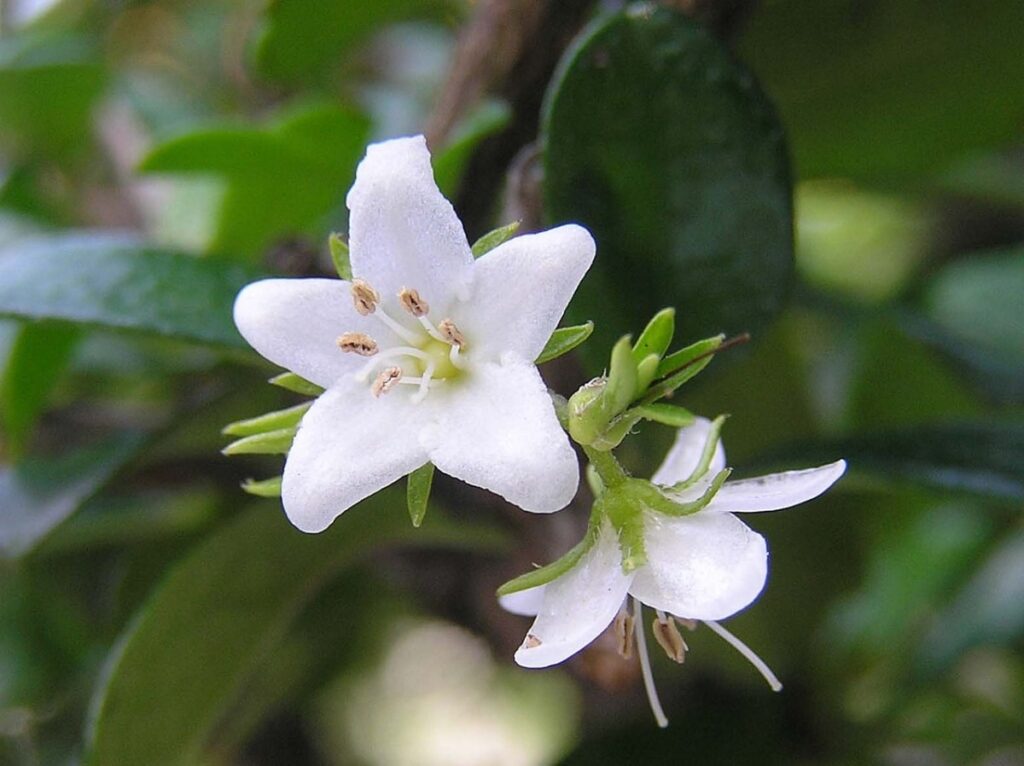
This Fukien tea bonsai will bloom almost every month of the year under proper conditions. As they bloom, they also produce tiny round fruits. The fruits usually appear in the early summer, they can be green, red, or black, and in appearance, they are quite similar to a rosehip, the fruit of the common rose plant.
Interesting Facts about Carmona Bonsai
| Scientific name | Carmona retusa or Ehretica microphylla |
| Common name | Fukien tea |
| Height | 6 to 29 inches |
| Width | 8 to 16 inches |
| Life span | At least 100 years |
| Country of origin | Fujian, China |
| Leaves | Small dark, round, and shiny leaves |
| Flowering | Small white flowers |
| Watering needs | Moderate |
| Placement | It prefers warm and humid places. |
| Temperature | 70 degrees Fahrenheit |
| Soil | good at retaining and draining moisture. |
| Fertilizer | organic, solid fertilizer or Liquid bonsai fertilizer |
| Pruning | Shaping and styling can be achieved by pruning. There is no need to prune to reduce the size of the leaves since they are naturally small. The best time for pruning is at the end of the winter. |
| Repotting | The best time to repot the Carmona bonsai is in the spring. It needs repotting every two years. |
| Wiring | A plant need not be wired, but if it is, it should be wired for the shortest possible period, preferably not more than three consecutive months. Long-term wiring will damage the trunk and root system. |
| Propagation | Seeds and cuttings |
| Indoor or outdoor | It is an indoor plant but can be grown outdoor as well. |
| Maintenance level | Very easy |
How to Care for a Carmona bonsai
Carmona Bonsai Plant Placement

Traditionally, Carmona bonsai is an indoor bonsai, but you can keep it outside in warm climates. As the plant requires a lot of natural light, it should be placed next to a window where it can get the best light.
The Fukien tea thrives well in temperatures around 70 degrees Fahrenheit, so make sure not to allow the temperature to drop much lower.
If the nights are warm enough during summer, you can place the tree outside. But winter months are a little bit tricky.
There are limited daylight hours in winter, and the heating system produces dry air, which affects the Carmona bonsai. To overcome this problem, you can use a plant lamp for light.
Fill a large tray with wet gravel or foamed clay to promote humidity and place it under the bonsai pot. While you open the window during the winter months, Carmona bonsai is not exposed to cold or frosty air.
Carmona Bonsai Watering
Besides lighting, frequent watering is needed. Watering must be very precise, as the Carmona plant does not like a dry or flooded substrate for a long time. Every time you water the Carmona plant, water it abundantly.
Ensure the bonsai pots have enough drainage holes so that excess water can drain out quickly.
While watering again, check the soil surface with your hand. If the soil feels dry, it is time to water your Fukien Tea bonsai.
Fertilizing Bonsai Carmona
Feed the Carmona bonsai with organic, solid fertilizer as they have very sensitive roots. You can also use a liquid fertilizer, carefully measure it and apply it to moisten the soil. The best time to fertilize the bonsai tree is from spring to autumn.
In the growing stage, use a fertilizer rich in nitrogen, such as the Hiryo Gold Growth organic fertilizer. And one month before blooming, use fertilizer rich in phosphorus. It is better to fertilize it with compost rich in potassium in autumn, such as Nutribonsai Eco.
Carmona Bonsai Soil Requirements
The Carmona bonsai plant does not like drought and excess wetness. Therefore, use soil that is good at retaining and draining moisture. Such type of soil will keep your Fukien tea bonsai healthy and ever-growing.
Carmona Bonsai Tree Misting
Although it is not essential, misting indoor Carmona plants help maintain the humidity around the plant. This is important during colder months when the air is dried out by central heating.
Carmona Bonsai Pruning and wiring

The Carmona plant is a slow-growing species, which delays its healing process. Therefore, you should avoid heavy pruning, and in case you are doing it, use a healing paste.
The best time to prune the Carmona is at the end of winter, just before it begins to grow the new buds.
You can do pinching throughout the year. Be more aware during spring as it is the time of greatest growth.
The young Carmona shoots are flexible and tender, so they are easy to prune. Whereas mature twigs and branches are hard and brittle, use appropriate pruning tools. Also, be careful while wiring or bending them.
If you want to give the desired shape to your Fukien tea bonsai, use bonsai wire to achieve that. When the branches are young, bend them back to your desired shape and secure them in place with the help of a wire. Once the tree bends into the desired shape, remove the wire and trim it to keep its shape.
Carmona Bonsai Plant Repotting
The best time to repot the Carmona bonsai is in the spring. It needs repotting every two years. It has a sensitive root system, so root pruning should be done carefully.
In addition, use a soil mix that drains well and retains moisture because the tree is sensitive to drought and excess wetness. The best mixture is of Akadama, with a little humus and pumice.
Please do not remove the root ball disturbance as they have fine roots which do not like being disturbed. The root system is not vigorous so consider repotting when the root ball is solid.
While repotting, simply lift the plant from its original pot and, with the help of a chopstick, tease out a few roots around the edge of the root ball. No need to remove much of the soil. Put the plant into a slightly larger pot and add a fresh soil mix around the edge of the pot.
Please remember repotting of indoor Carmona bonsai is best during the warmer summer months, as it is a growing period.
Carmona Bonsai Propagation
You can propagate Carmona bonsai through seeds and cuttings. But the seed does not frequently germinate, and it is not the best way to propagate indoor Carmona bonsai. You can purchase a healthy bonsai to enjoy growing the bonsai and propagate new bonsai by taking cuttings. But still let’s learn them how;
Seed propagation:
Growing Carmona bonsai from seed is not challenging, but time-consuming. Every tree in nature comes from seeds and the pleasure of growing one thriving young tree on your own is a great experience.
Just like any kind of seed, Carmona bonsai must need a period of dormancy to let them sprout. Seeds in their germination phase are most vulnerable and this will stop them from sprouting in the fall just to die by the winter frost. The seeds must stay moist to do this and after that, they need light and warmth to germinate. The germination process will take a few weeks.
- You will need small disposable pots or any kind of container, potting mix, a bowl, water, and a zip-lock bag.
- Place the seeds in a bowl of water for 24 hours or overnight.
- Meanwhile, prepare the containers by washing and drying them. Make holes at the bottom if needed.
- If the soil is dry, moisten it beforehand with water but don’t make it muddy.
- Fill the pots with the newly prepared soil.
- Place the seeds on the surface of the soil with even space. The thicker the seed the more space it required.
- Add a layer of soil over the seeds to secure them in place. Water it properly if the soil still looks dry.
- Leave them in this state for about an hour and trap the air and moisture around them by covering them with plastic or placing them in a zip-lock bag.
- Place them in the fridge till the end of winter and do a moisture check from time to time.
- After winter place the pots where the temperature is above 60 degrees F.
- Once the seeds start to sprout place them in a sunny spot and transplant in individual pots next spring.
Propagation from cuttings:
Growing Carmona plant from cutting is a more practical way of propagation as it lessens the potential risk of fertilization and germination that can easily go wrong. The process is much faster than seed cultivation. Instead of waiting for a seed to germinate you can use a mature plant’s pruning parts to start new growths.
The best time to propagate is in spring. Allow new shoots to grow 8-10 cm and with the help of clean pruning scissors, prune them. Place the cuttings into fresh multipurpose compost in a small pot. Water it and keep misting it to maintain its humidity. Let’s discuss it in detail;
- Cutting also produces the best result if you use strong rooting hormone and keep it in a cool, humid atmosphere.
- First, prepare the potting medium. Plant the cuttings in early July and before collecting the cuttings, prepare the soil. Mix an equal part of peat and medium-grit sand in a bucket and moisten it till the peat starts to swell.
- Fill the mixture in the container.
- Gather four-inch cuttings from a healthy mother plant’s side branches. Use pruning shears to clear the leaves from the bottom of the cuttings.
- Dip them in rooting hormone for a couple of seconds.
- Poke holes in the container and insert the cuttings in the holes. Make the whole bigger than the branch so that the rooting hormone won’t rub off in the soil while inserting.
- You can place the pot outside in a cool, bright spot but shield it from direct sun or wind.
- Mist the soil twice a day to avoid drying out. Spray it above the cutting so the mists will naturally fall over them and replicate raindrops.
- Wait for the roots to sprout and transplant them in autumn.
Carmona Bonsai Pests and diseases

Under inadequate conditions, the plant can attract spider mites, scale, and whiteflies. You can use insecticide sticks or insecticide sprays to control these pests. But for long-term success, provide the Carmona bonsai with plenty of natural light and enough humidity.
Moreover, watering with hard water can cause the leaves to show signs of chlorosis. Treat this problem with iron fertilizer.
Sometimes, the fungal disease is transmitted through fresh wounds, which can kill a single branch or even the entire tree. So, make sure to use clean tools and cut-paste for fresh wounds.
Is Fukien tea a good option for bonsai?
Yes, Fukien tea (Carmona) is a good choice for bonsai.
Carmona plants have beautiful leaves that make the entire space look attractive.
In addition, the best thing about Carmona is that it enjoys a warm and humid environment. If you live somewhere where you do not have a lawn for growing outdoor plants, you can easily grow Carmona in indoor conditions.
For this reason, experts suggest that the Carmona plant is the perfect choice for the bonsai, as it is easy to care for the Carmona bonsai tree.
Why are my Carmona bonsai leaves drooping?
There can be multiple reasons why the Carmona bonsai starts to drop its leaves.
1. Overwatering
If you provide more water to the Fukien tree than its needs, it will cause the drooping of leaves.
2. Underwatering
Not giving enough water to the plant at the time will cause its leaves to dry up; eventually, it will lead to the dropping of leaves.
3. Poor Lighting
Light is essential for a plant to survive on its own. When the Carmona bonsai does not receive enough light, it will get weaker and weaker.
4. Incorrect fertilization
Incorrect fertilization affects the growth of the Carmona tree. If you have used the wrong fertilizer or given more than what is needed, its leaves will start dropping and fall.
5. Repotting issues
While repotting, if you have used poor quality soil or damaged the roots while pruning, it will stop the growth of the Carmona tree.
Eventually, the leaves will start turning yellow then they will drop.
6. Temperature changes
The Carmona tree has a favourable range of temperature. If you expose the plant to too hot or too cold temperatures, its leaves will droop and fall.
How to save a Carmona bonsai from dying?
Does your Carmona bonsai seem to be dying? Would you like to save it in some way?
Following are the steps to save your plant,
- Prune off all the dead sections of your Carmona bonsai plant.
- Also, prune the roots and remove all dead, damaged, and infected parts.
- Now, put your bonsai plant in water and allow it to rest there for some time.
- Prepare the soil and bonsai pot for your plant. Make sure to use soil that has moisture-retaining and draining abilities.
- Repot the Carmona plant into a new pot and soil.
- Palace it at a suitable place where it can get enough sunlight at the right temperature.
- Start giving an adequate amount of watering and keep watering regularly on time.
- Also, give enough time and care to Carmona bonsai to keep it healthy and rapidly growing.
Why are my Carmona Flowers drying up in one-two day?

1. Overwatering
Carmona plant is very sensitive during the flowering stage. When you overwater it, it’s important to understand what’s happening beneath the soil surface. Tree roots need both air and water for their growth, the air is needed for growth stimulation, and if overwatered, it won’t get the needed air to grow new roots. Also, the clogging water state in the soil will stop the roots from absorbing the nutrients that are necessary to keep the flowers healthy.
At this point, you have to water your tree through your observation. Wait and provide water only when the top surface of the soil gets dry and must avoid leaving the bonsai in excess water.
2. Nutrition
If your soil doesn’t have enough nutrients in it your roots won’t get the nutrient supply to absorb, which may cause its flowers to dry up fast. Especially if it’s lacking phosphorus, as phosphorus promotes blooming and fruit formation.
For a quick phosphorus dose, you can create a phosphorus-based fertilizer at home with simple ingredients around your house. You can increase the phosphorus level in your compost just by adding mushrooms, egg shells, or banana peels.
3. High Temperature
Carmona is a subtropical tree species, meaning they love light and high humidity. It is instructed to put your Carmona bonsai near your window as they require a few hours of direct sunlight. But whenever we heard the word “direct sunlight”, we tend to get overboard and misunderstood the needs. Carmona tree’s temperature range goes from 18 degrees Celsius to 28 degrees Celsius. So, if you provide hours of direct sunlight, that is over 30 degrees Celcius, thinking they are sun-loving plants, those delicate flowers might dry up and burn prematurely even before seeing their colorful days.
In that case, provide indirect sunlight for a few days or keep them inside, but don’t keep them in an air-conditioned room as it will dry out the air, and Carmona flowers despise it.
4. Additional Tip
In some cases, fungus like powdery mildew can affect the plant and prevent it from uptaking water, which can leave the flowers dry or wilting.
SAAF fungicide: Saaf is a powerful fungicide that combines both systemic and contact action. Its active ingredients, Mancozeb and Carbendazim, make it highly effective in combating fungal infections in plants.
Mancozeb works as a contact fungicide, targeting the fungus on the plant’s surface, while Carbendazim is a systemic fungicide that is absorbed by the plant and circulated throughout its system, providing protection against internal infections.
Cinnamon powder solution: Cinnamon can be a useful fungicide for controlling fungal infections in plants, and making a cinnamon spray is an easy way to take advantage of its benefits.
To make a cinnamon spray, mix some cinnamon into warm water and let it steep overnight. The next day, strain the mixture through a coffee filter and transfer the liquid into a spray bottle. You can then use the spray to apply cinnamon to the leaves and stems of affected plants.
FAQs
1. Is Carmona bonsai indoor?
Generally, Carmona bonsai is kept as an indoor bonsai tree, but it can be grown outdoors during the summer months or with the right protection.
2. How to protect Carmona bonsai in winter?
Carmona Bonsai should be protected from any late frosts that may occur. Watch your Carmona tree closely during overwintering.
Water only when the soil is dry; in winter, the tree does not need much watering. Also, keep a check on trees for insects and infections regularly.
3. When should I winterize my Carmona Bonsai?
Bring the Carmona Bonsai to a warm and protected environment when the temperature begins to dip near 40 degrees Fahrenheit.
4. Does Carmona Bonsai Flower?
Carmona Bonsai produces tiny white flowers almost year-round.
5. Do Carmona bonsai go dormant?
No Dormancy is needed but brings the plant inside in winter.
Conclusion
This plant is commonly known as the Fukien tea tree after the south-eastern province where it originates in China. In Latin, it is called Carmona retusa, and it belongs to the Boraginaceae family, but in terms of modern science, it is called Ehretia buxifolia.
Additionally, Fukien tea trees grow natively in India, Malaysia, and the Philippines. Although it is considered a small tree in its native habitat, the Carmona tree can reach twelve feet!
It’s a perfect piece of living art for the house and a plant for bonsai projects. Moreover, the plant is easy to maintain.
If you have any Carmona bonsai care tips, please share them in the comment section.
Related Articles
- 9 Herbs To Grow Indoors All Year Round
- Needles Drying Out On Juniper Bonsai- Causes, Signs, and Treatment.
- How To Grow And Care For Dogwood Bonsai
- All About Grow Light- Best Grow Lights For Your Bonsai In 2024
- White spots on the leaves?- Powdery mildew on bonsai (identification and solution).
- Innovative Bonsai Photography and Online Sharing


